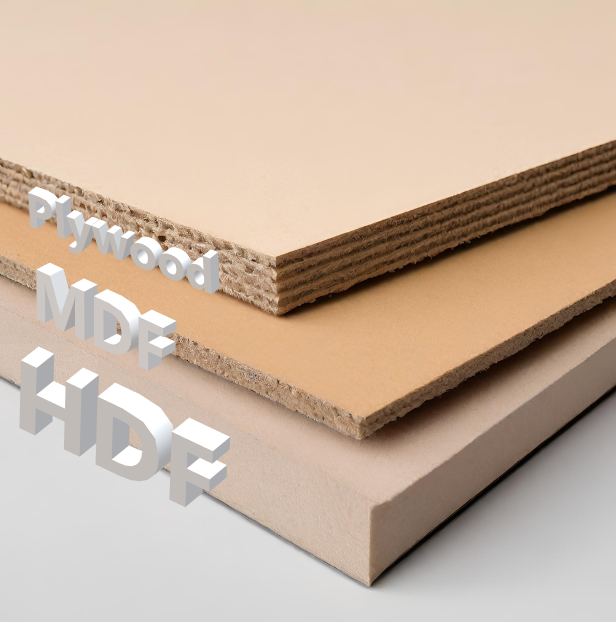When it comes to engineered wood products, High-Density Fiberboard (HDF) and Medium Density Fiberboard (MDF) are two prevalent options for woodworking and construction projects. In this blog post, we’ll explore the distinctions between HDF and MDF, helping you make an informed decision when choosing the right material for your next projects.
HDF (High-Density Fiberboard)
Crafted from wood fibers, wax, and resin, compressed under high pressure, HDF boasts high strength and stability, making it an ideal choice for precision applications.
Pros of HDF:
- Uniform Density: HDF offers consistent density across the board, ensuring reliability and stability in various applications.
- Strength and Stability: With high density comes robustness, making HDF suitable for applications where strength and stability are paramount.
- Ideal for Precision Work: HDF’s smooth surface and consistent composition make it perfect for applications requiring precision and a flawless finish.
Cons of HDF:
- Moisture Susceptibility: Like many engineered wood products, HDF is susceptible to moisture. However, it generally fares better than MDF in this regard.
MDF (Medium Density Fiberboard)
As a versatile engineered wood product formed by binding wood fibers with wax and resin, MDF has become a popular choice in a variety of woodworking and furniture applications.
Pros of MDF:
- Versatility: MDF is highly versatile and easy to shape, making it suitable for intricate designs and a wide range of applications.
- Affordability: Compared to HDF, MDF is often more budget-friendly, making it an attractive option for projects with cost considerations.
- Smooth Surface Finish: MDF boasts a smooth and consistent surface finish, ideal for painting and veneering.
Cons of MDF:
- Moisture Susceptibility: MDF is susceptible to moisture, which can lead to swelling or warping. It is crucial to avoid prolonged exposure to damp conditions.
| Criteria | HDF (High-Density Fiberboard) | MDF (Medium Density Fiberboard) |
|---|---|---|
| Density | 800kg/m3 – 1000kg/m3 | 680kg/m3 – 730kg/m3 |
| Strength and Stability | High | Good |
| Ideal for Precision Work | Yes | Not as ideal as HDF |
| Versatility | Moderate | High |
| Affordability | $$ | $ |
| Moisture Susceptibility | Susceptible, but less than MDF | Susceptible; may swell or warp |
| Surface Finish | smooth; ideal for painting, veneering | Smooth; ideal for painting, veneering |
Making the Decision
The choice between HDF and MDF ultimately depends on the specific requirements of your project. If precision and strength are paramount, HDF is an excellent choice. On the other hand, if versatility and affordability take precedence, MDF may be the more suitable option.
Consider factors such as the intended application, budget constraints, and the environment in which the finished product will be placed. Whether you’re crafting furniture, molding, or intricate designs, understanding the merits and drawbacks of HDF and MDF will guide you towards selecting the ideal engineered wood for your project.
